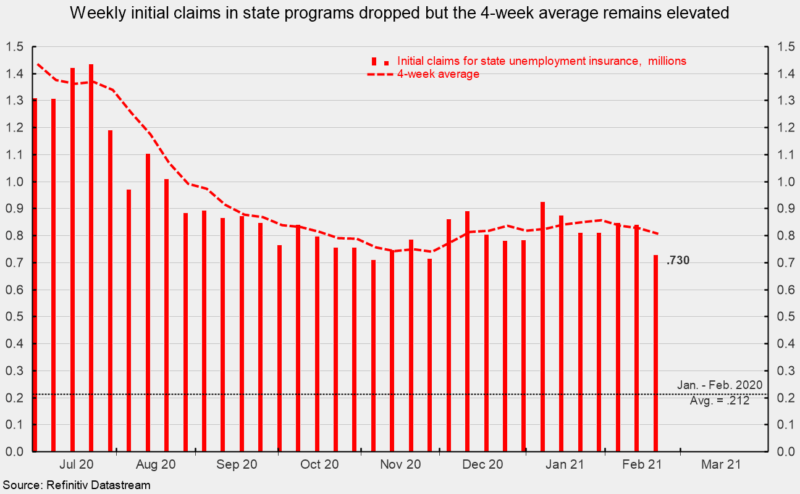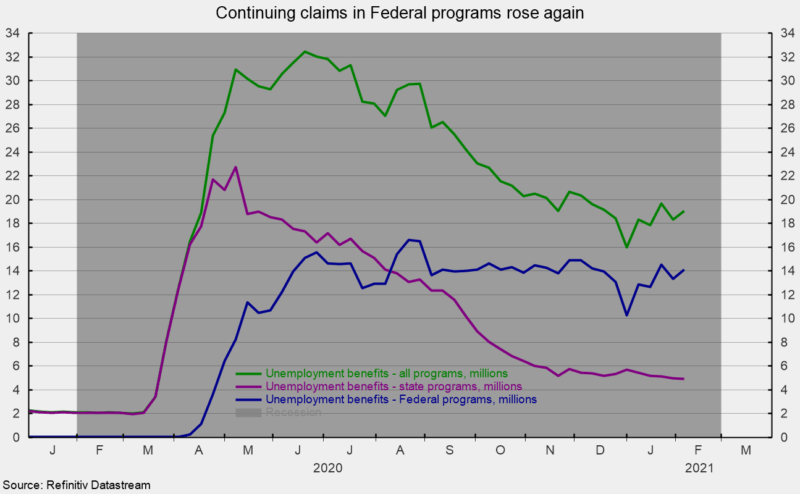Initial Claims Fall to the Lowest Level Since November
Initial claims for regular state unemployment insurance totaled 730,000 for the week ending February 20, down 111,000 from the previous week’s downwardly revised tally of 841,000 (see first chart). The latest week is the lowest level since November 28 and follows a run of six consecutive weeks above the 800,000 level. Initial claims have continued to run in the 700,000 to 1 million range for 26 consecutive weeks and remain well above the pre-pandemic level of 212,000 in early 2020 (see first chart).
The four-week average fell 20,500 to 807,750, the third weekly decline in a row. However, the four-week average has been above the 800,000 level for 11 consecutive weeks. Persistent initial claims at such a historically high level remain a threat for the labor market recovery and the economy.
The number of ongoing claims for state unemployment programs totaled 4.934 million for the week ending February 6, down 68,890 from the prior week. State programs had been trending lower since early March, but the downward trend has turned to a flattish trend since the week ending November 21, decreasing by an average of just 25,408 or 0.4 percent per week over the past 11 weeks (see second chart). For the same week in 2019, ongoing claims were 2.095 million.
Continuing claims in all federal programs rose again in the latest week, coming in at 14.108 million for the week ending February 6 (see second chart). Since the beginning of June 2020, continuing claims in all Federal programs have averaged 14.051 million.
The total number of people claiming benefits in all unemployment programs including all emergency programs was 19.043 million for the week ended February 6, up 701,102 from the prior week.
Government restrictions on consumers and businesses continue to distort economic activity and remain a significant threat to the outlook for economic growth. The development and distribution of vaccines is a very positive factor and should eventually lead to sharply less government restrictions. In the meantime, the claims data combined with the disappointing jobs report for January suggest the labor market remains fragile. The longer the virus continues to spread (along with the possibility of variants prolonging the outbreak), consumers remain restricted, and businesses remain closed or limited, the more uncertain a labor market recovery becomes and the higher the probability of a slow and drawn-out economic recovery.







